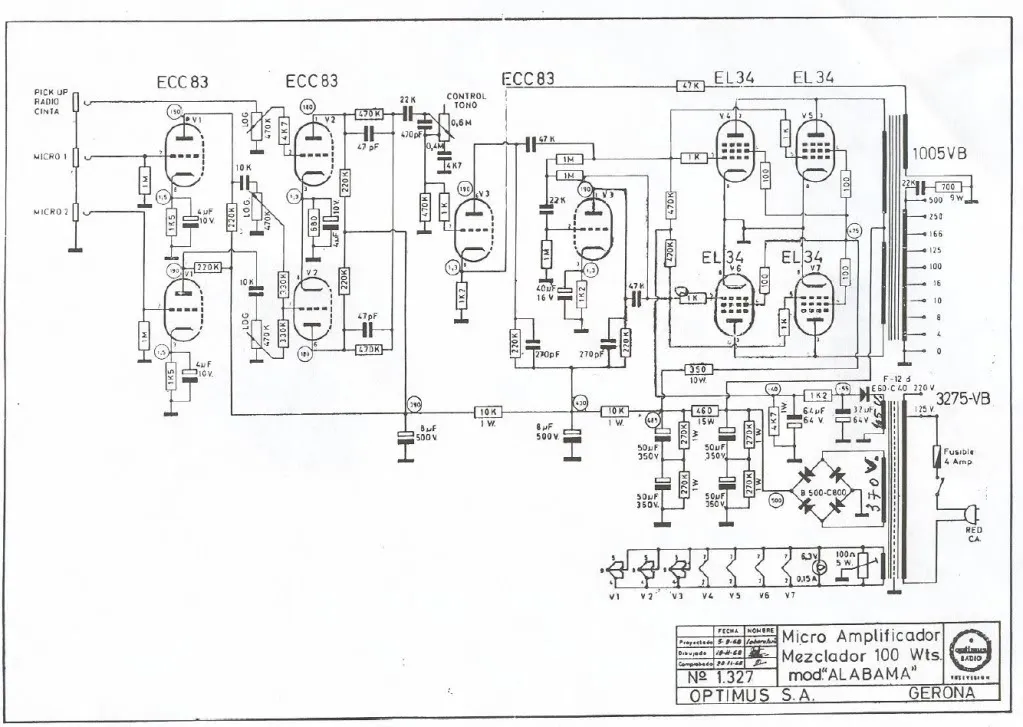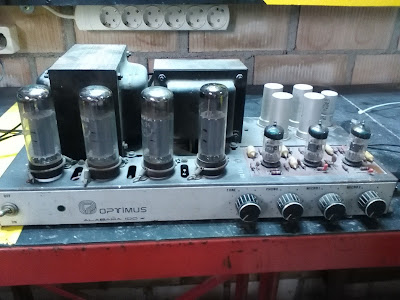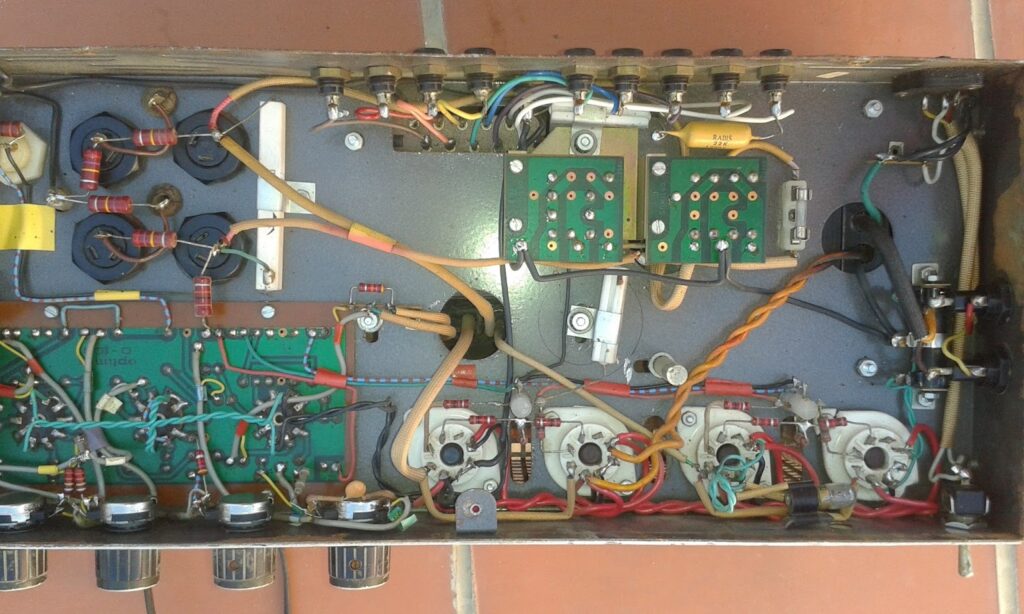
This interesting amplifier was brought to me for general maintenance and a few modifications. Its owner wanted to convert the amplifier for use with guitar and bass, aiming to modify it to resemble a Marshall MKII Superbass, which was perfectly feasible.
Upon the first inspection, I found a broken ceramic base for an EL34 tube, fuses of incorrect rating, and dried-out electrolytic capacitors.
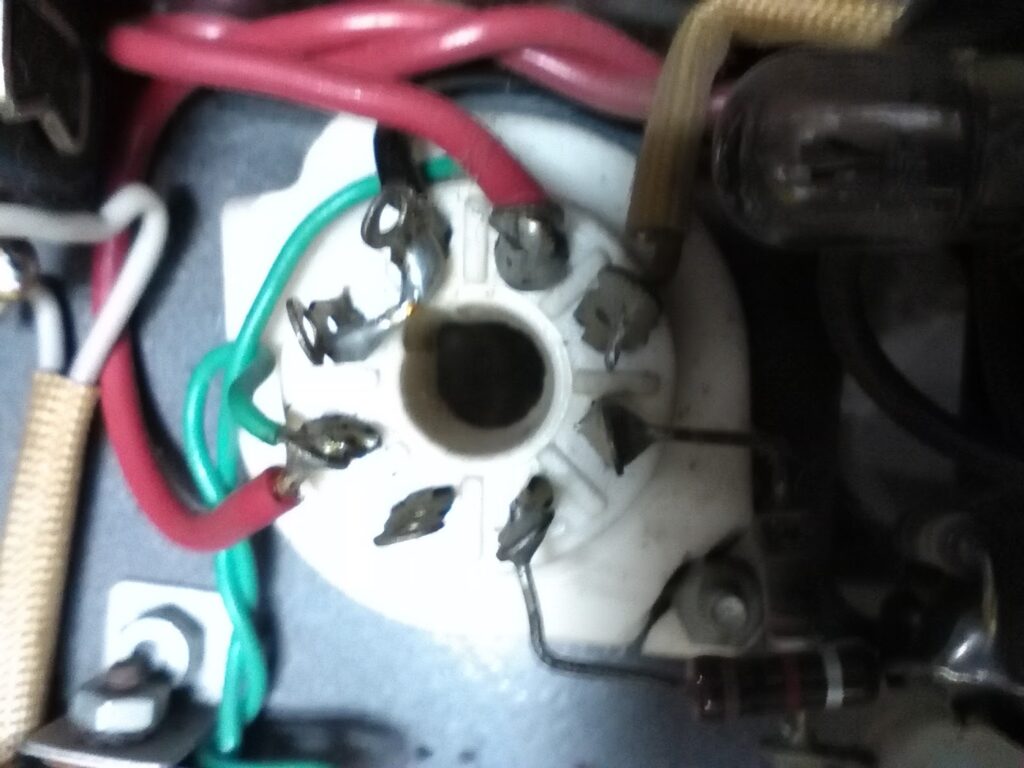
The repair was straightforward: the broken octal socket was replaced with a new one of better quality than the original, the fuses were changed to the correct ratings, and the power cable was replaced with a new one because the old one was in poor condition. I installed all new filter electrolytic capacitors under the chassis, leaving the old ones in place but disconnected from the circuit to preserve the amplifier’s external appearance.
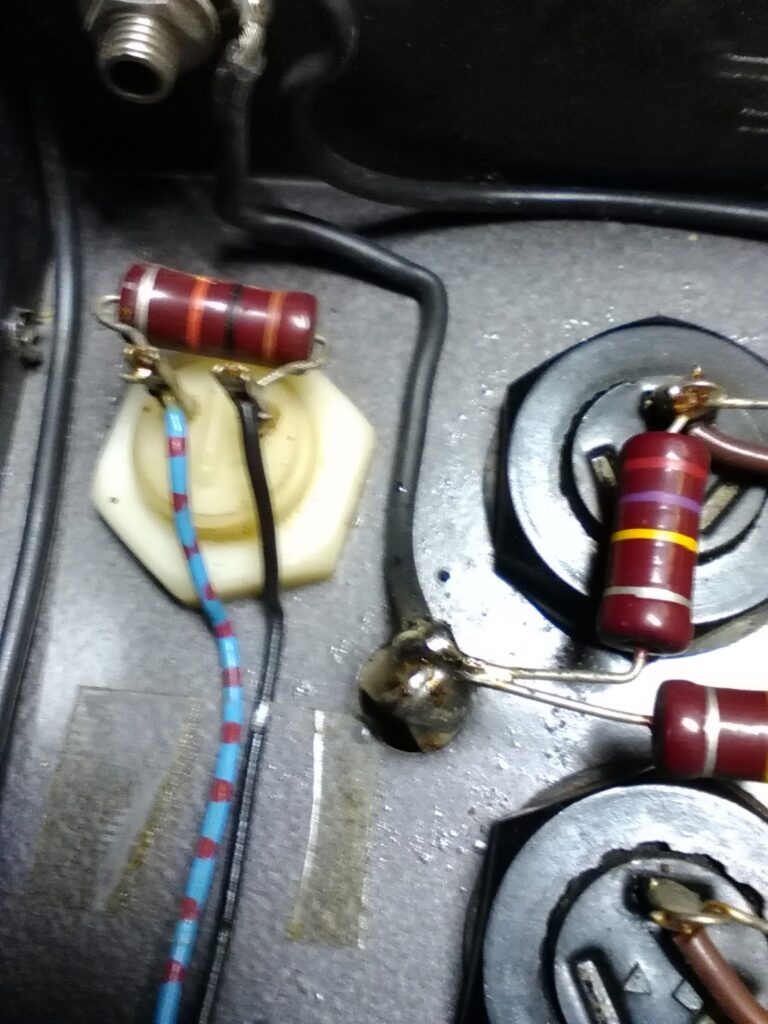
Regarding the modifications, they consisted of making the amplifier as similar as possible to the Marshall MKII Superbass. The inputs were replaced with 6.3mm mono jacks — one for guitar and another for bass. As for the outputs, the banana connectors for the 4, 8, and 16 ohm outputs were replaced with 6.3mm mono connectors to allow connection to modern speaker cabinets. The other high-impedance outputs were left with banana connectors, since they are unnecessary for the amplifier’s intended use.
The only part that couldn’t be replicated exactly was the tone control due to lack of space on the front panel for more potentiometers. Instead, I installed a Baxandall-type tone control, which works wonderfully. However, one potentiometer had to be replaced because its value was not suitable for the tone control. This caused a small issue: when changing the potentiometer, its corresponding knob also had to be replaced, as the new potentiometer was thicker and the original knob wouldn’t fit.
After completing all the changes and repairs, the amplifier was powered on:
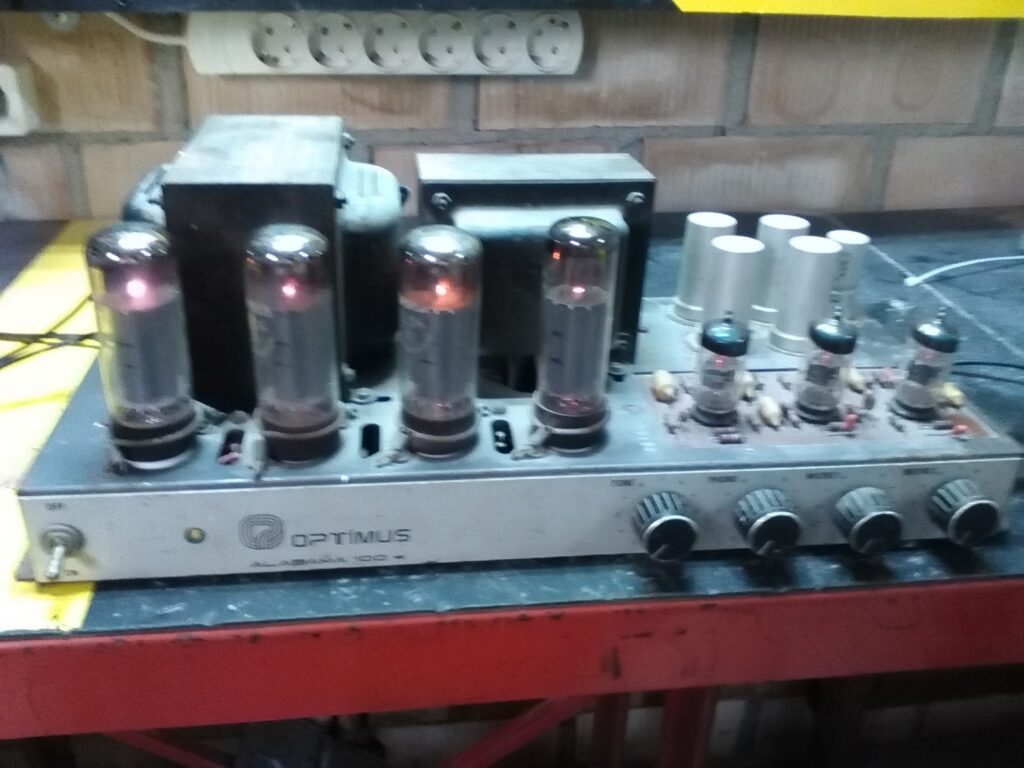
It worked perfectly on the first try! I tested it with a 100-ohm dummy load because I had some 50W power resistors of that value. Injecting a 1kHz audio signal, this is what was observed across the load resistor:
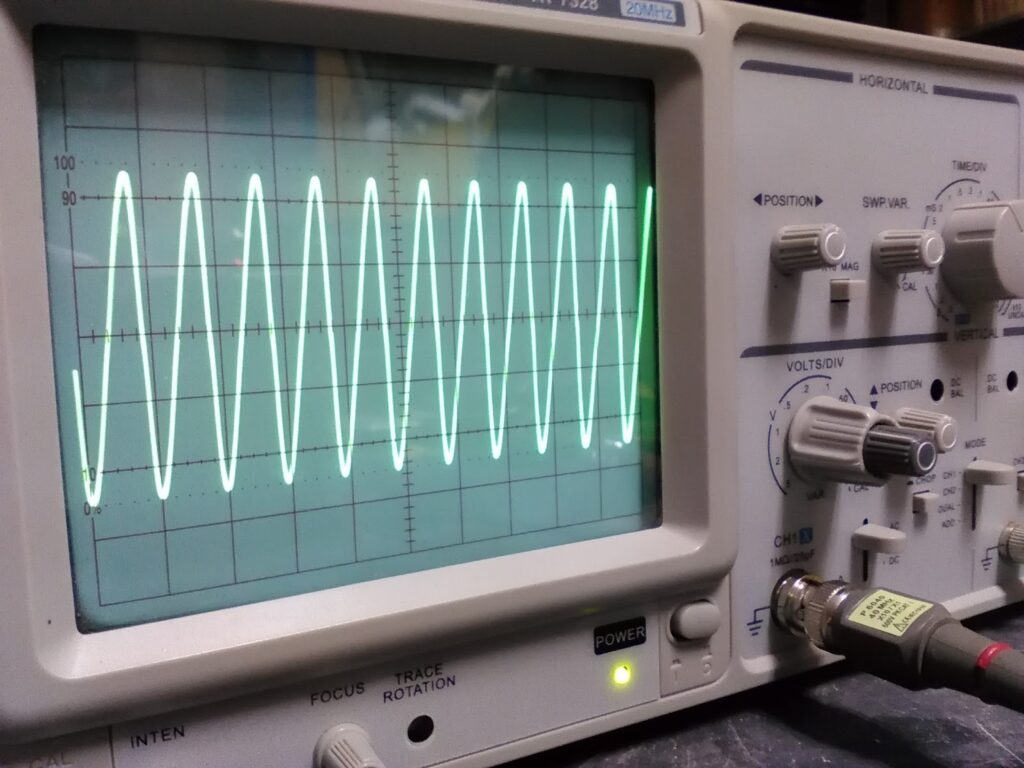
A perfect signal with a power of 50W (it can reach 100W without problems, but in the photo it is set to 50W to avoid burning the load resistor).
Finally, the owner was advised to replace the four EL34 tubes with a new matched set, as the ones he had were a bit worn out. In the end, the owner left very happy with his amplifier and has been using it often with his guitar.
Here is the schematic of the amplifier:
